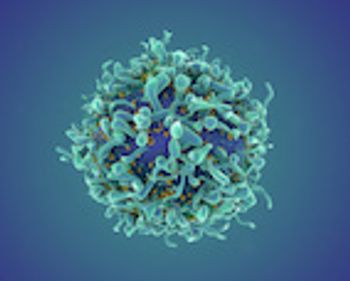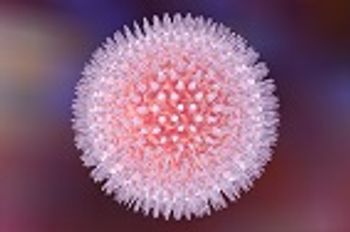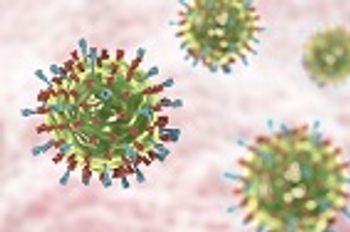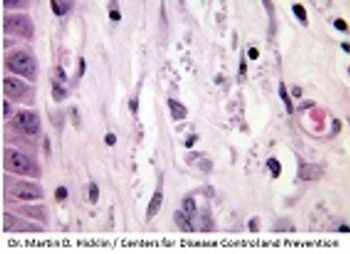
Researchers from the Centers for Disease Control and Prevention have published more information on the incidence of birth defects in infants born to mother infected with the Zika virus.

Researchers from the Centers for Disease Control and Prevention have published more information on the incidence of birth defects in infants born to mother infected with the Zika virus.

A new report from the US Department of Health and Human Services shows a drop in hospital-acquired conditions since 2010, marking improvements in patient safety for the national healthcare system.

UC San Francisco researchers have found a link between pubic hair grooming and sexually transmitted diseases.

Acute myocardial infarction rates are higher in HIV-positive patients; a new study out of the VA may help clinicians determine who’s most at risk.

Male circumcision has been promoted by public health officials as a way of reducing HIV-1 infection rates, and now, the first study of its kind shows that circumcision rates have also impacted the spread of HIV-2 in West Africa.

Researchers found that 6% of fetuses or infants congenitally infected with the Zika virus developed birth defects.

Researchers find that the tuberculosis vaccine can offer protection against other diseases due to its “trained immunity.”

As rates of syphilis have gone up around the world, a team of researchers from the University of Zurich have found that today’s epidemic strains have shared origins and emerged after the discovery of antibiotics.

A dynamic partnership has resulted in the development of a new, minimally-invasive device that can be used to treat HIV, cancer, and a number of other disease, ensuring medicinal adherence.

Why do more HCV-infected immigrants, rather than non-immigrants, end up hospitalized for liver problems? Inadequate screening and longer infection duration are likely reasons.

In a review article, researchers share current understanding of the pathogenesis of type IV T cell-dependent immune-mediated ADRs and review the evidence for diagnostics for T cell-mediated ADRs.

The latest news regarding the spread of the Zika virus in the United States, and recent discoveries on how Zika infects the human brain is included in this article.

A defense mechanism by which plants and animals fight off RNA viruses was recently observed in human cells for the first time, offering researchers a look at new ways to treat viral diseases.

The United States is experiencing its biggest mumps outbreak in years, causing a surge of cases across the country after several years of relatively few cases. This has prompted health officials to take steps to prevent further spread of the disease.

As Hawaii struggles to recover from two food-borne outbreaks, DOH officials seek to make revisions to their food safety regulations to enhance food-borne illness prevention.

New guidelines released by researchers with the Infectious Diseases Society of America recommend that people with suspected latent tuberculosis infections receive a new generation of diagnostic testing.

Researchers from Brazil have developed a platform that can successfully diagnose hundreds of different viruses.

University of New Hampshire (UNH) scientists are developing an algorithm to predict when NH’s Great Bay Estuary’s oysters may be at risk of contamination.

While flu vaccination rates for pregnant women have more than doubled since 2005, a new report from the Centers for Disease Control and Prevention says that at least half of expectant mothers are missing out on the protective benefits of the flu shot.

A recent study examines antibiotic prescribing patterns in children in primary care settings in the United Kingdom, Netherlands, and Italy.

A new study shows corticosteroids may be an effective tool in fighting tuberculosis with comorbid acute respiratory failure.

In honor of National Influenza Vaccination Week, the CDC reports on influenza vaccination coverage and the benefits of receiving a flu shot.

The CDC’s NCHS released its mortality report on life expectancy and leading causes of death for adults and infants in 2015.

Researchers discover a simple method for estimating fitness of antiviral-resistant influenza strains using surveillance data.

Aggressive and earlier treatments can forestall new HIV infections, but how much are we willing to spend?

The authors may have also discovered a potential therapeutic target for the complication.

Researchers have found cases of atypical cutaneous leishmaniasis (ACL) in northeast Brazil are caused by distinct strains of Leishmania braziliensis.

As antibiotic-resistant Pseudomonas aeruginosa infections continue to vex healthcare settings, a new study from University of Georgia researchers offers insight on just how the pathogen works inside the human body.

Scientists are studying whether wild animals play a role in the transmission of Heartland virus to humans.

A new pair of studies take a look at the human immune response to the flu vaccine and explain how the flu components may affect the shot’s effectiveness.